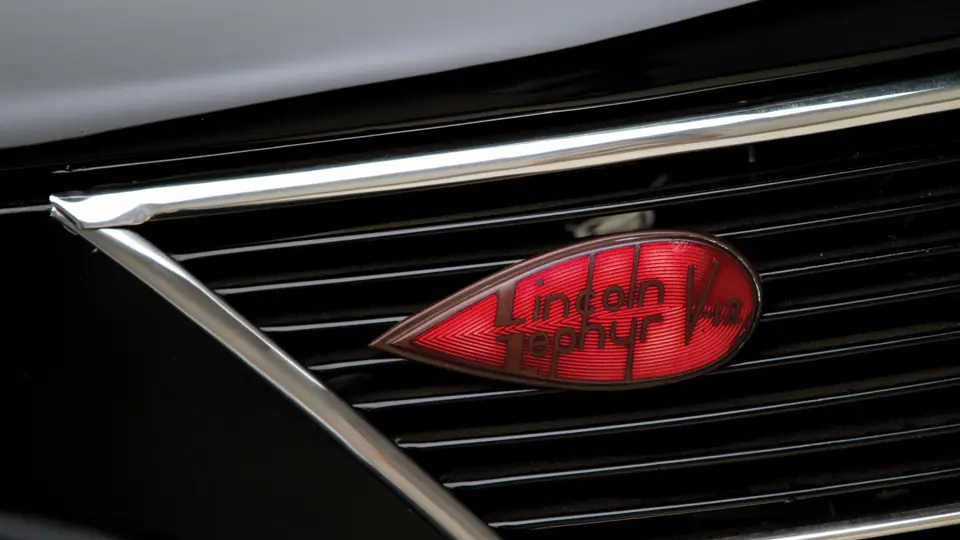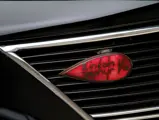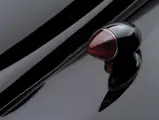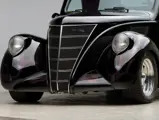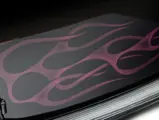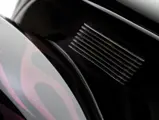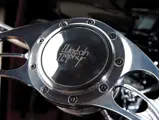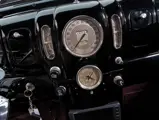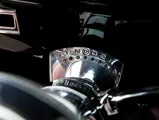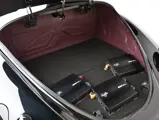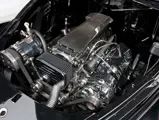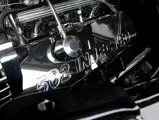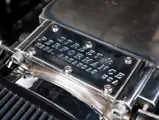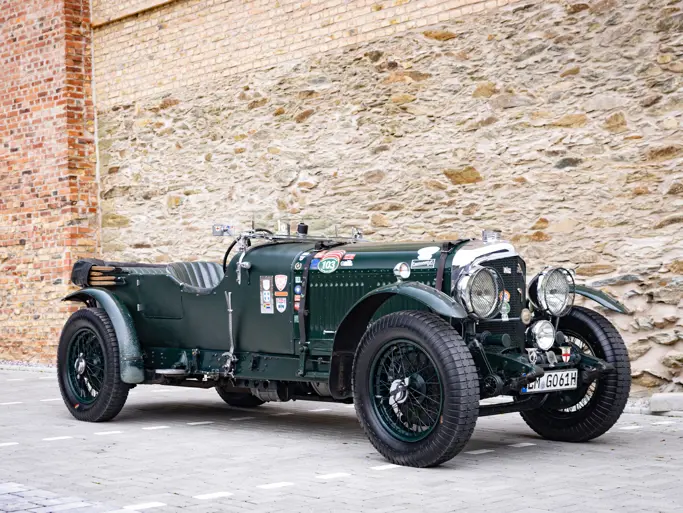450 bhp, 502 cu. in. OHV V-8 engine, four-speed automatic transmission, coil spring independent front suspension, live rear axle with semi-elliptic leaf springs, and four-wheel hydraulic disc brakes. Wheelbase: 122.0 in.
The Lincoln-Zephyr arrived just in time. Its parent company, Lincoln, was facing almost certain demise in the early-1930s; in 1935, just 1,411 cars were sold. The popularly-priced Zephyr, a derivation of designer John Tjaarda’s “Sterkenberg” studies, promptly added 14,000 to the marque total for 1936, and nearly twice that many in 1937. New that year was a curvaceous three-passenger, three-window coupe, which immediately stole the show from its larger sibling, the fastback coupe sedan. Nearly 5,200 were built.
This comely coupe retains its original beauty but adds some bite to its bark. In place of the original 267-cubic inch V-12 is a massive 502 Chevy big block crate engine. Fed by electronic fuel injection, it develops approximately 450 brake horsepower. The transmission is a 700R4 four-speed overdrive Hydra-Matic. The solid axle front suspension has been replaced with a Corvette coil-over-shock independent setup, with power rack-and-pinion steering.
The cabin is upholstered in maroon leather, harmonizing nicely with black carpet on the floor. The Lincoln-Zephyr dashboard has been retained, still with original center-mounted instruments. The modern Lincoln-Zephyr script steering wheel mounts on a tilt column with cruise control. Power windows and a custom stereo with a JVC video player complete the creature comforts.
The exterior paint is jet black, with subtle ghost maroon flames on the front fenders. The smooth deck lid is power-operated. Fender skirts were original equipment on Lincoln-Zephyrs; the cars would look naked without them. Lincoln advertised the Zephyr coupe as having a “swift-flowing, rhythmic appearance.” That describes this car perfectly.




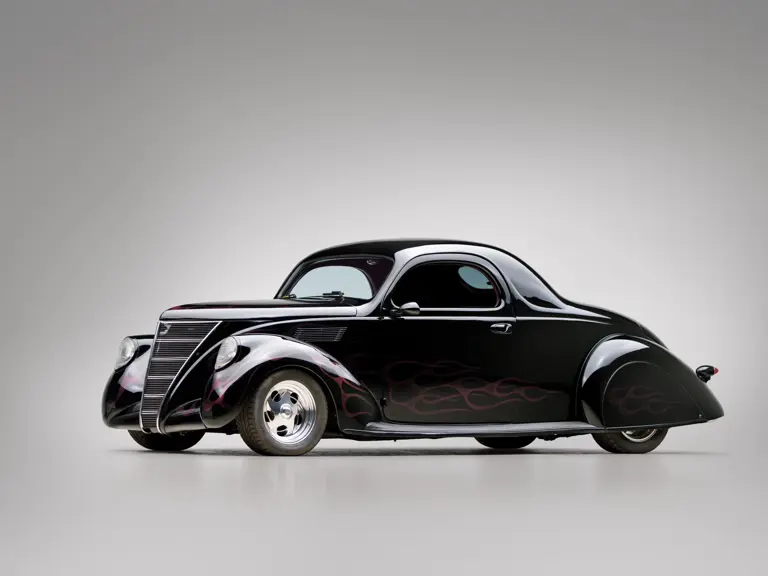
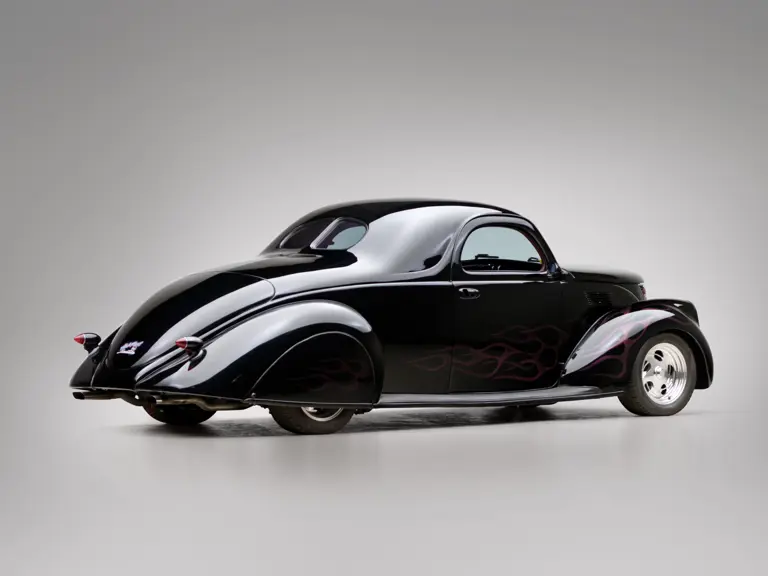
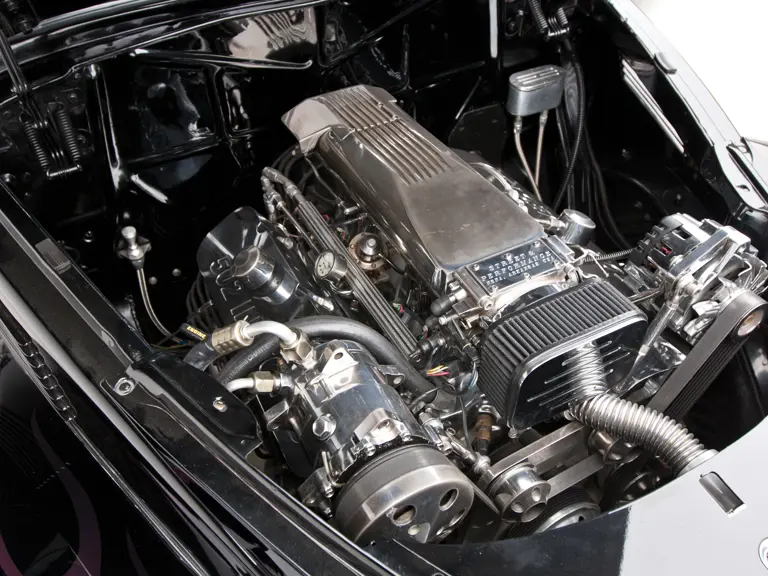

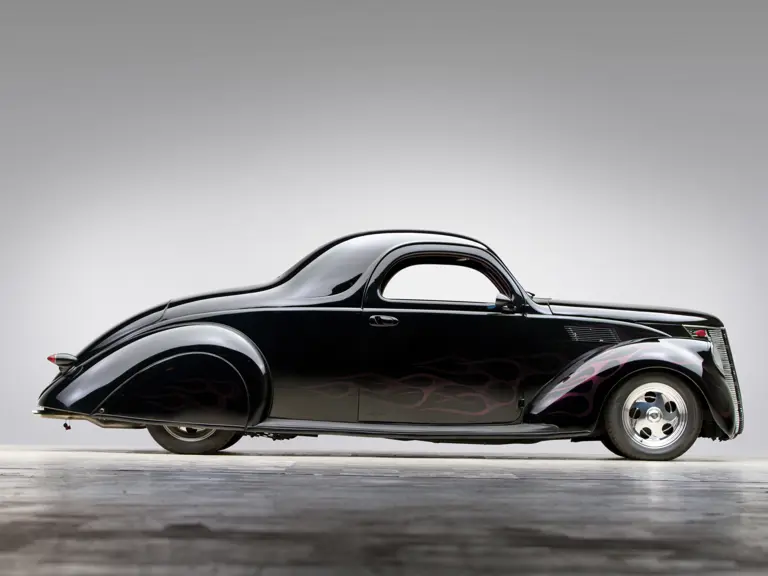
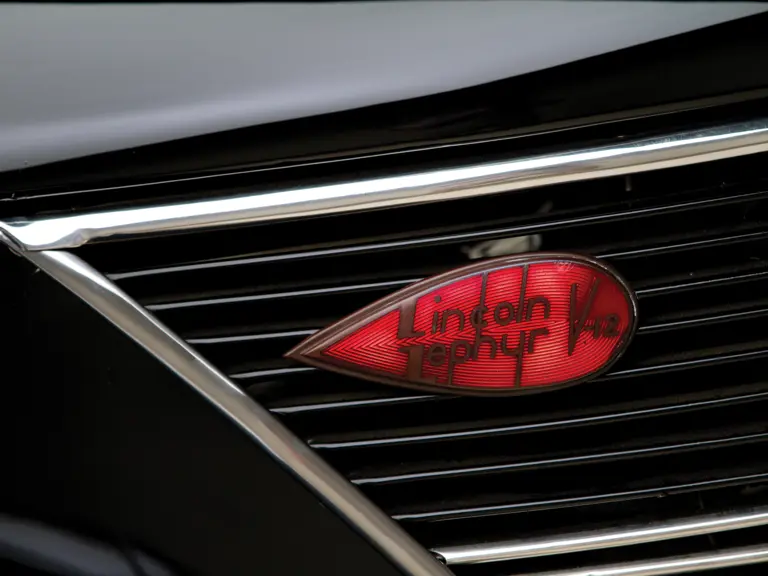
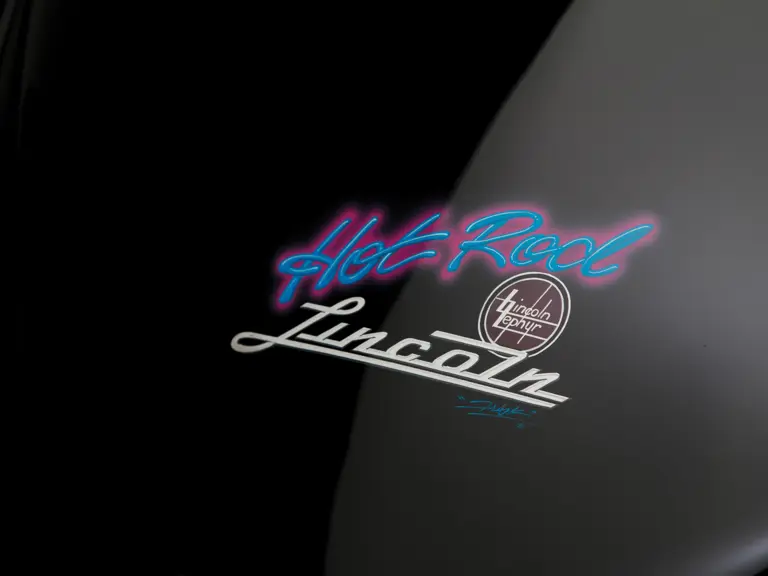
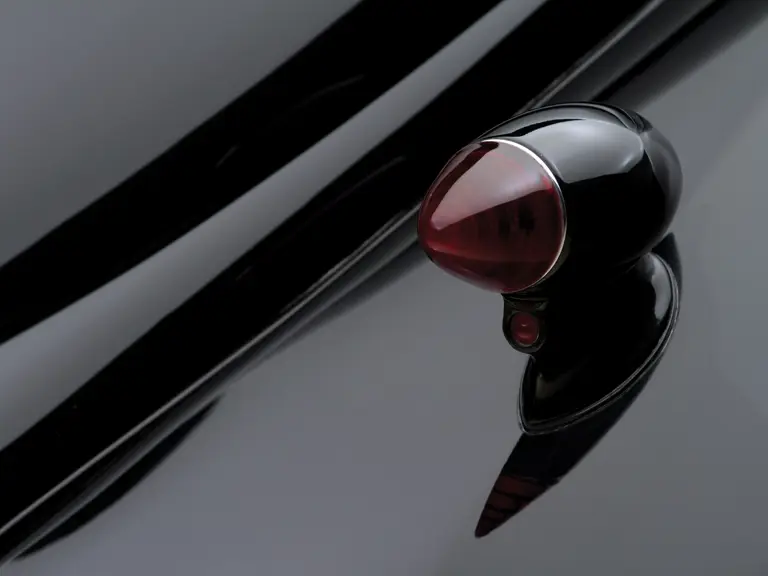
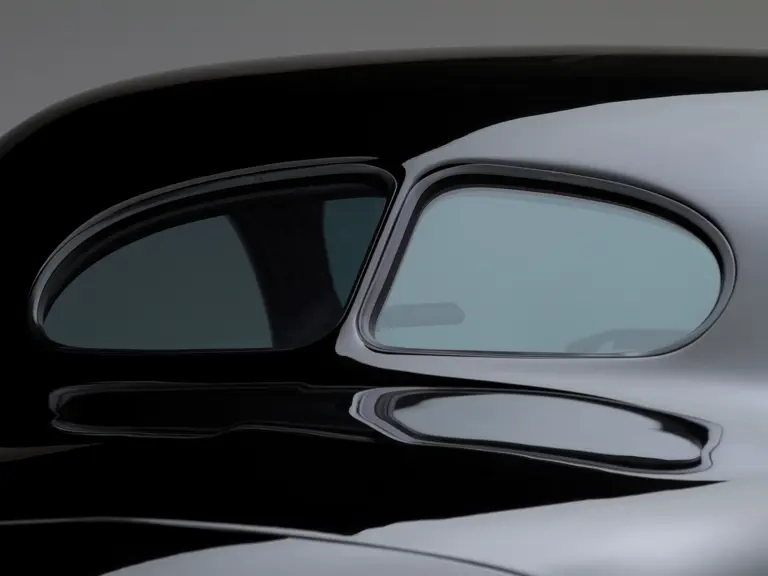
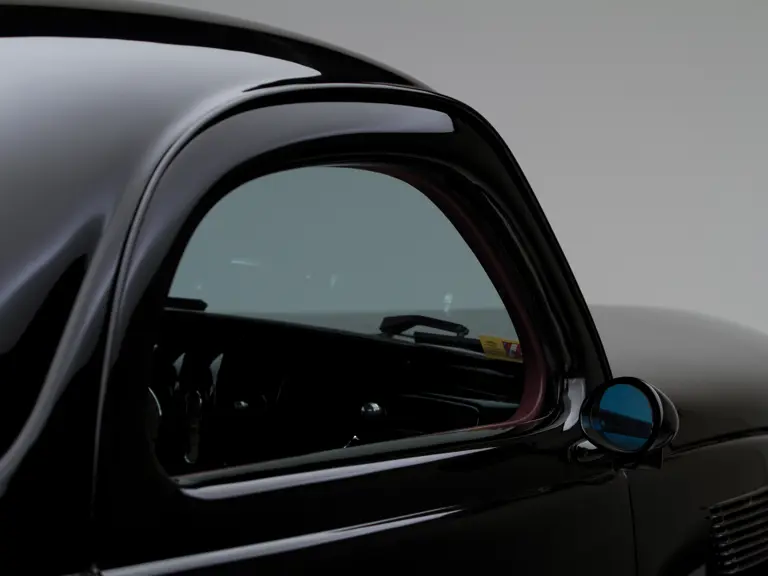
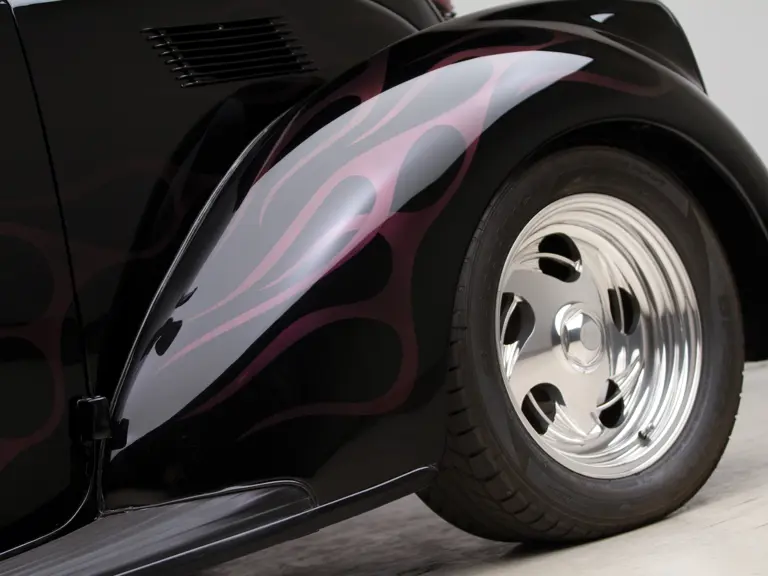
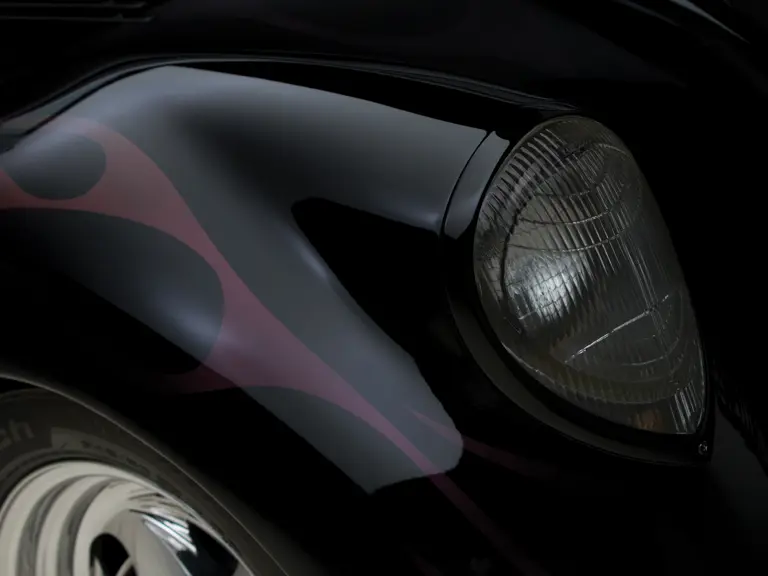
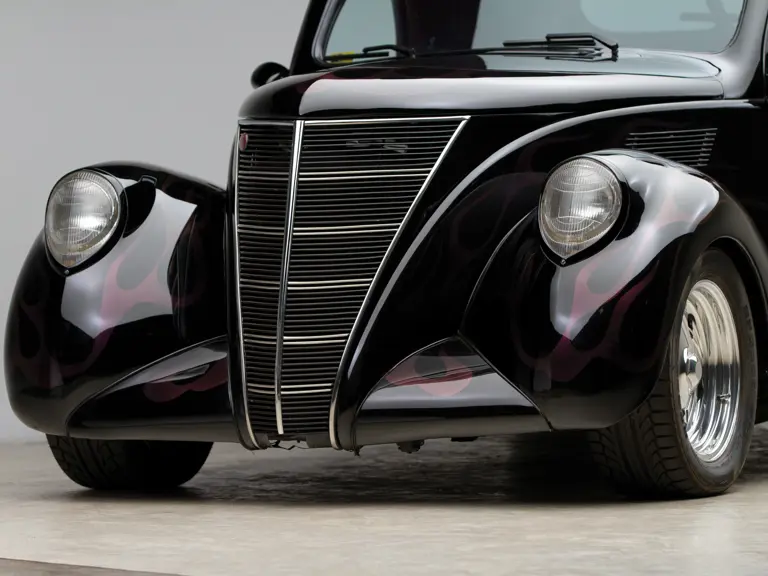

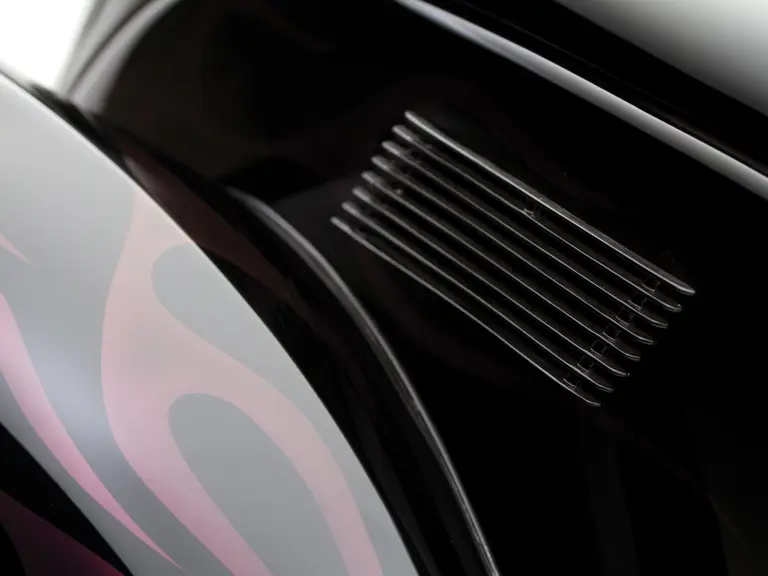

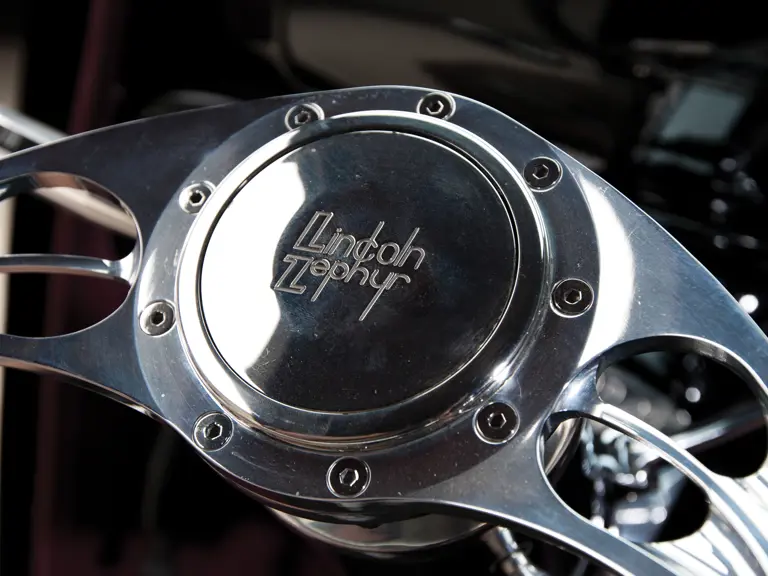
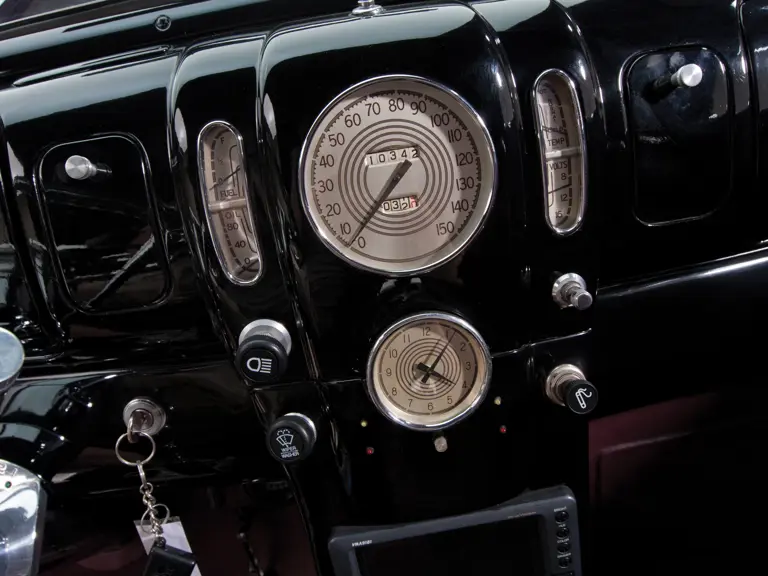
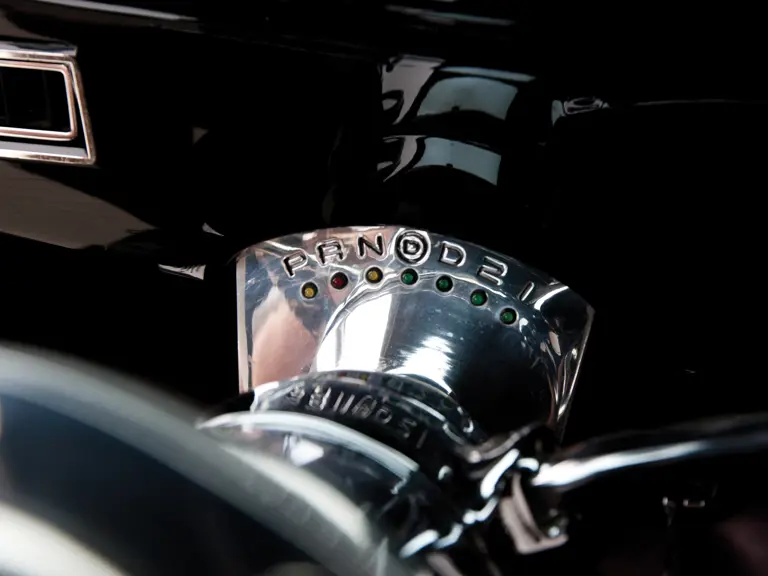
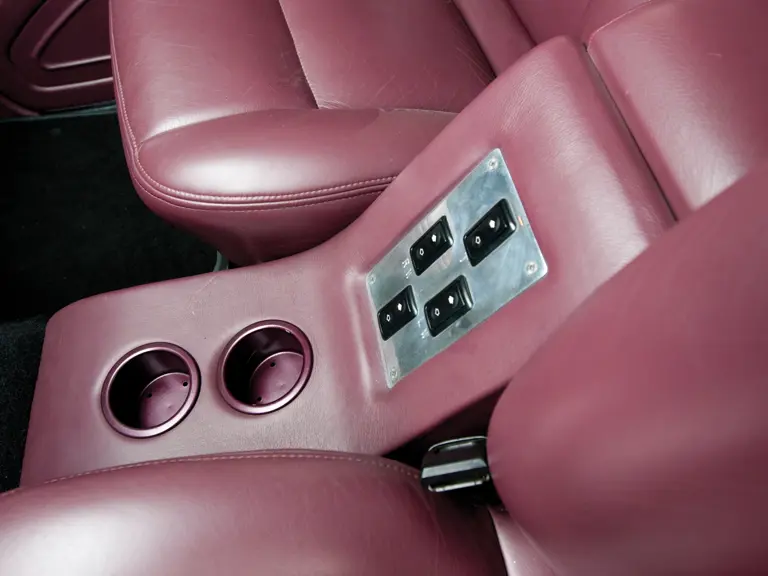
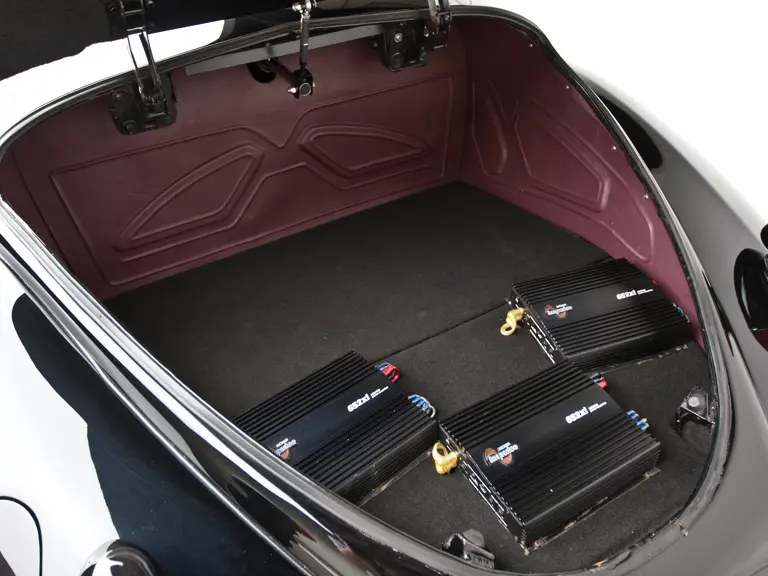
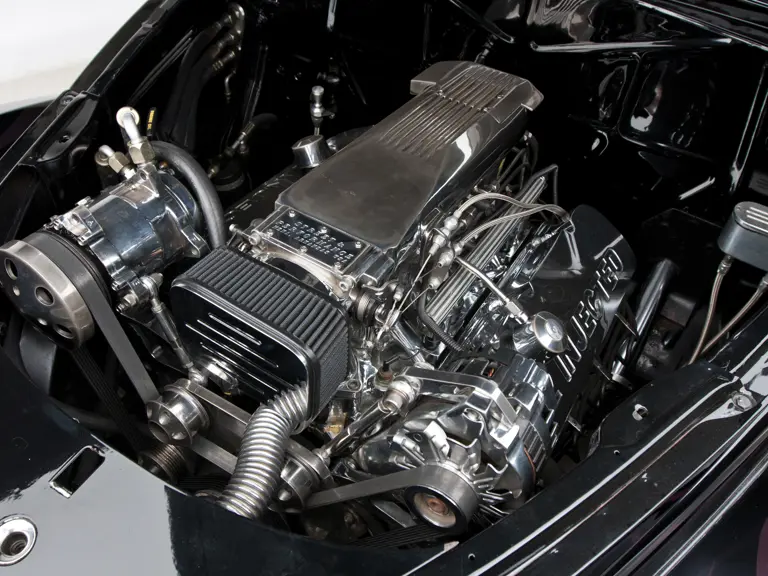

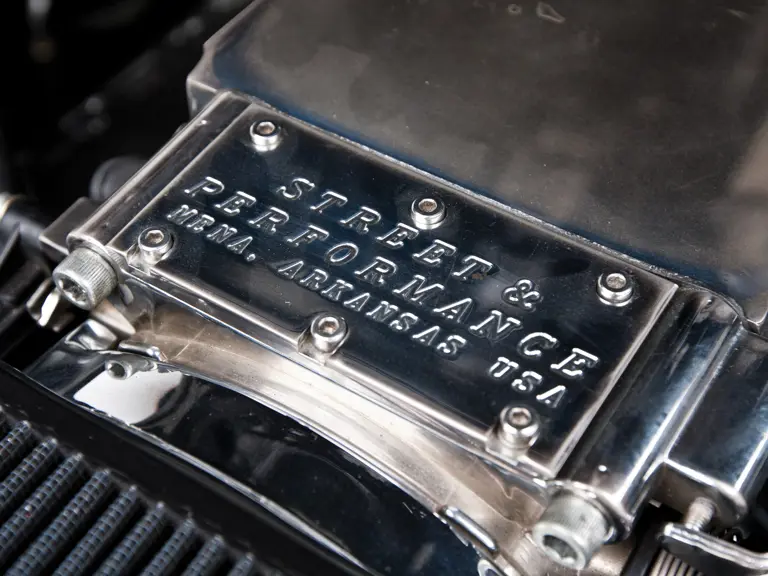
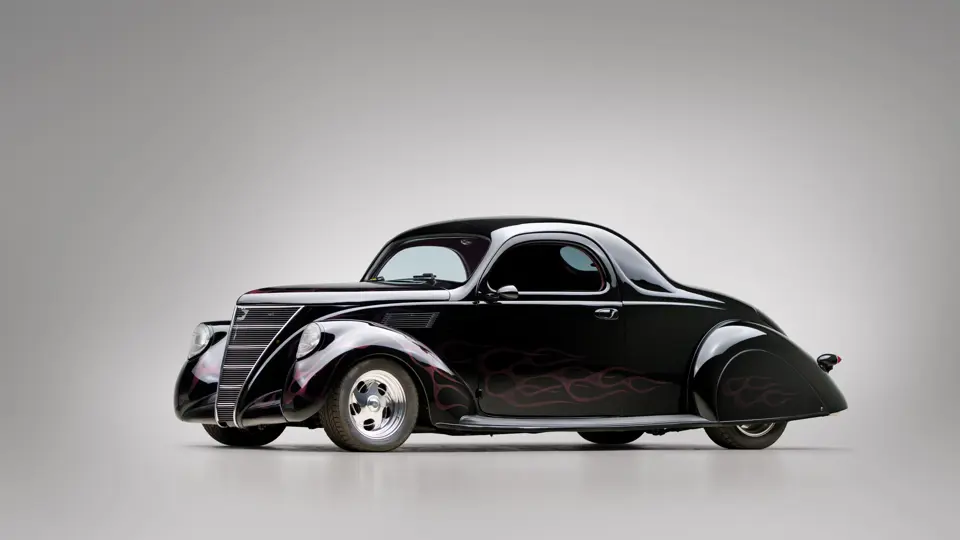
 | North Palm Beach, Florida
| North Palm Beach, Florida

